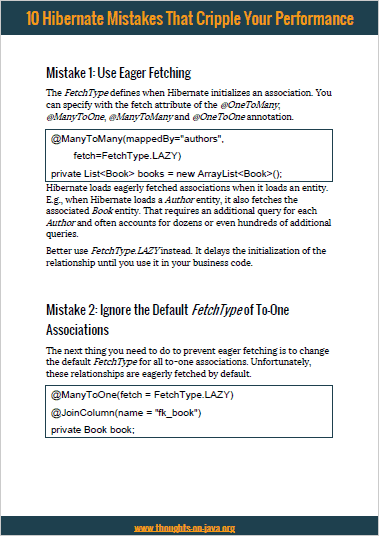Trip Report: Geecon Prague 2015
Take your skills to the next level!
The Persistence Hub is the place to be for every Java developer. It gives you access to all my premium video courses, monthly Java Persistence News, monthly coding problems, and regular expert sessions.
The GeeCON Prague 2015 took place last week on the 22nd and 23rd. And as you might already know, I had the pleasure to speak about performance tuning with Hibernate and JPA 2.1. It was a very well organized 2-day conference that took place in the CineStar Praha cinema.
Have you had the chance to attend a conference in a cinema? I really like these kind of locations. The slides and life codings are shown on a huge screen and the audio is really good. The only drawback of it was that there was not enough light in the area before the screen. At least in not in room 1, in which I gave my talk on Friday morning. So I was not allowed to move too much during the talk and had to stick to a approximately 1.5x2m area near my laptop.

OK, but lets talk a little bit more about the conference, before we get to my talk about Hibernate performance tuning. As I already said, it was a 2-day conference and it offered a lot of great talks. Some of the most interesting ones were the keynote Level Up by Grant Ingersoll, Simon Browns talk about modular monoliths and Antonio Goncalves introduction to JBoss Forge.

Grant Ingersoll gave a lot of inspiration on how to level up your own skills and the applications you are developing and put all of that into the context of (old) computer games. As with all of these kind of talks, Grant did not offer any new technical insides, but I simply like these kinds of inspirational keynotes. They are always a good start into a conference.

Simon Brown presented a very refreshing view on software architecture in his talk Modular Monoliths. Let me try to summarize it in a few words: There are not only unstructured monoliths and microservices. And microservices are not the solution for everything. You can also build a monolithic system consisting of multiple, well designed components. These provide better code quality, test-ability and adept-ability than unstructured monoliths and can be a stepping stone to microservices (if you really want to take that way).

And my third recommendation is 50 minutes to develop a full Java EE application with JBoss Forge by Antonio Goncalves. Antonio gave a very entertaining introduction to JBoss Forge and if you haven’t already tried it, you should definitely do. You can use it to quickly create new Java EE projects and prototypes of your application.
I have done that for a few projects and I was always amazed how much stuff you can get done in a very short period of time.

And then there was of course my talk about performance tuning with JPA 2.1 and Hibernate. I got the first slot on Friday morning at 9 am, but being fully awake was not an issue as soon as the adrenaline kicked in. It went very well and we had some interesting discussions at the end of it and afterwards in the foyer. During the talk, I gave an overview about how to find performance issues, their typical reasons and what to do against them.
You can find the slides of the talk below and I will add the recording of it as soon as it is available. If you like to get an overview about different JPA and Hibernate features that can boost your application performance, you should also have a look at the performance tuning cheat sheet.
You can find the slides of my talk on slideshare: Performance Tuning with JPA 2.1 and Hibernate.

